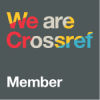Experience and enlightenment: “Customer-oriented” nine-stage major gifts management model of world-class U.S. universities
Abstract
Since the 1990s, “customer orientation” marketing has been widely applied to major gifts management of world-class U.S. universities, forming a donor-centered model for major gifts management. It focuses on donor demands management, relationship cultivation and value creation, which has a major effect on university fundraising and development. Through literature review and case study of the University of Pittsburgh, this study analyzes the major gifts management model of world-class U.S. universities in terms of theory, structure, operation model, and development characteristics. The findings show that there are two important characteristics of the organizational structure of major gifts management in the United States: one is the donation market segmentation and the donor classification management; the other is the refinement of donation management functions. And this paper proposes a nine-stage major gifts management model of world-class U.S. universities, which contains “Definition-Identification- Qualification-Development of Strategy-Cultivation-Solicitation-Negotiation-Acknowledgment -Stewardship.” Finally, this paper summarizes the development trend of major gifts management: emphasizing donor’s value creation, donor internalization and capitalization, cultivating prospective donors from national to international, moving towards integration of leading capacity building and donor orientation.
Received: 08 April 2019
Accepted: 05 November 2019
Published online: 29 November 2019
Downloads
References
Association of Donor Relations Professionals. “Donor Relations and Stewardship Defined.” Accessed October 5, 2019.
Avectra. “The New Model of Moves Management For Effective Fundraising.”Accessed October 5, 2019. http://cdn2.hubspot.net/hub/447141/file-2184258567-pdf/The-New-Model-Of-Moves-Management-For-Effective-Fundraising_Avectra.pdf?t=1417809451029. https://www.adrp.net/assets/documents/adrpdefinitionsexpanded.pdf.
Bandura, Albert. “The Explanatory and Predictive Scope of Self-Efficacy Theory.” Journal of Social and Clinical Psychology 4, no. 3 (1986): 359–373.
Bekkers, René, and Pamala Wiepking. “A Literature Review of Empirical Studies of Philanthropy: Eight Mechanisms That Drive Charitable Giving.” Nonprofit and Voluntary Sector Quarterly 40, no. 5 (2011): 924–973.
Beth, Breeze. The Coutts, Million Pound Donors Report 2011. London: University of Kent, 2011.
_____. The Million Pound Donors Report 2012. London: University of Kent, 2012.
Burnett, Ken. Relationship Fundraising: A Donor-Based Approach to the Business of Raising Money. San Francisco: John Wiley & Sons, 2002.
Carroll, Ryall, and Luke Kachersky. “Service Fundraising and the Role of Perceived Donation Efficacy in Individual Charitable Giving.” Journal of Business Research 99 (2019): 254–263.
Denzin, Norman K., and Yvonna S. Lincoln. The Qualitative Inquiry Reader. Sage, 2002.
Drollinger, Tanya. “Using Active Empathetic Listening to Build Relationships with Major-Gift Donors.” Journal of Nonprofit & Public Sector Marketing 30, no. 1 (2018): 37–51.
Duronio, Margaret A., and Bruce A. Loessin. Effective Fund Raising in Higher Education: Ten Success Stories. ERIC, 1991.
Elliott, Deni. The Kindness of Strangers: Philanthropy and Higher Education. Rowman & Littlefield Publishers, 2005.
Erie, Thomas. Mary K. Blair. Hughes-Hallett, and P. Lampl. Increasing Voluntary Giving to Higher Education: Task Force Report to Government. Nottingham: Department for Education and Skills, 2004.
European Fundraising Association. “Special Focus: What today’s philanthropists really want.” Last modified September 18, 2019. https://efa-net.eu/features/special-focus-what-todays-philanthropists-really-want.
Fajardo, Tatiana M., Claudia Townsend, and Willy Bolander. “Toward an Optimal Donation Solicitation: Evidence from the Field of the Differential Influence of Donor-Related and Organization-Related Information on Donation Choice and Amount.” Journal of Marketing 82, no. 2 (2018): 142–152.
Funds101. “Fundraising Cycle.” Last modified January 30, 2013. http://funds101.blogspot.com/2013/01/fundraising-cycle.html.
Gailperry Association. “Major Gifts Series #8: How to Use Moves Management To Raise Major Gifts This Year.” https://www.gailperry.com/how-to-use-moves-management-to-raise-major-gifts/.
Goettler Associates. “Major Gifts Developing Strategies for Success.” Accessed June 12, 2014. http://www.goettler.com/resources/the-goettler-series/volume-9- major-gifts/.
Haddad, Duke. “Donor Cultivation Is Key to Success.” Last modified June 29, 2018. https://www.nonprofitpro.com/post/donor-cultivation-is-key-to-success/
HAI Analytics. “Data Analytics & Development: 3 Ideas to Help Non-Profits Grow Gifts.” Last modified August 6, 2019. https://haianalytics.com/blog/data-analytics-development-3-ideas-to-help-non-profits-grow-gifts.
Harrison, Virginia S. “Understanding the Donor Experience: Applying Stewardship Theory to Higher Education Donors.” Public Relations Review 44, no. 4 (2018): 533–548.
He, Yurong. “A literature review of higher education donation system in China.” China Electric Power Education. no. 28(2011): 19-21.
Jones, Jennifer A., and David L. Daniel. “Academic and Practitioner Collaborations in Fundraising Research: A Case Study of One Action Research–Driven Collaboration.” The Journal of Nonprofit Education and Leadership 9, no. 2 (2019).
Kelly, Kathleen S. “Learning the ROPES: A New Theory Weaves Together the Many Strands of Fund-Raising Activity.” CASE Currents 24, no. June (27–28) (1998): 30–31.
_____. Effective Fund-Raising Management. Mahwah: Routledge, 1998.
_____, and Chuck Kelly. Fund Raising and Public Relations: A Critical Analysis. Lawrence Erlbaum Associates, 1991.
Kotler, Philip, and Gary Armstrong. Fundamentos de Marketing. Google Scholar. accessed October 10, 2019. https://scholar.google.com/scholar?hl=en&as_sdt=0%2C5&q=Kotler%2C+Philip%2C+and+Gary+Armstrong.+Fundamentos+de+ Marketing.+Pearson+Educaci%C3%B3n%2C+2003.&btnG=.
Levitt, Theodore. Marketing Myopia. London: Boston, 1960.
Lord, Jim. “So I asked Dave Dunlop: Is ‘moves management’ misunderstood?” Accessed October 2, 2019. https://leadershipphilanthropy.com/so-i-asked-dave-dunlop-is-moves-management-misunderstood/.
Marr, Kelly A., Charles H. Mullin, and John J. Siegfried. “Undergraduate Financial Aid and Subsequent Alumni Giving Behavior.” The Quarterly Review of Economics and Finance 45, no. 1 (2005): 123–143.
McDonald, Katie, Wendy Scaife, and Susan Smyllie. “Give and Take in Major Gift Relationships.” Australian Journal of Social Issues 46, no. 2 (2011): 163–182.
Meng, Yan, and Hong Chengwen. “Strategies and implications of fund-raising campaign at the University of Toronto.” Chongqing higher education research. no.5 (2017): 92-100.
Narver, John C., and Stanley F. Slater. “The Effect of a Market Orientation on Business Profitability.” Journal of Marketing 54, no. 4 (1990): 20–35.
O’Neil, Julie, and Marisa Schenke. “An Examination of Factors Impacting Athlete Alumni Donations to Their Alma Mater: A Case Study of a US University.” International Journal of Nonprofit and Voluntary Sector Marketing 12, no. 1 (2007): 59–74.
Olsen, Andrew. “How do your prospects rank on the 3 C’s ?” Last modified March 7, 2012. http://andrewolsen.net/how-do-your-prospects-rank-on-the-3-cs/.
People. “Record! Bloomberg announced a donation of $1.8 billion to his alma mater [Chinese].” Last modified November 19,2018. http://ah.people.com.cn/n2/2018/1119/c358315-32305418.html.
_____ “Tsinghua won the highest donation amongst domestic universities for 2.2 billion-yuan [Chinese].” Last modified October 23, 2018. http://edu.people.com.cn/n1/2018/1023/c1053-30357207.html.
Pressgrove, Geah Nicole, and Brooke Weberling McKeever. “Nonprofit Relationship Management: Extending the Organization-Public Relationship to Loyalty and Behaviors.” Journal of Public Relations Research 28, no. 3–4 (2016): 193–211.
Pressgrove, Geah. “Development of a Scale to Measure Perceptions of Stewardship Strategies for Nonprofit Organizations.” Journalism & Mass Communication Quarterly 94, no. 1 (2017): 102–123.
Rogers, Ronald W. “A Protection Motivation Theory of Fear Appeals and Attitude Change1.” The Journal of Psychology 91, no. 1 (1975): 93–114.
Rosen, Michael J. Donor-Centered Planned Gift Marketing:(AFP Fund Development Series). Vol. 192. John Wiley & Sons, 2010.
Sargeant, Adrian, and Elaine Jay. Building Donor Loyalty: The Fundraiser’s Guide to Increasing Lifetime Value. San Francisco: John Wiley & Sons, 2004.
Sargeant, Adrian, and Stephen Lee. “Trust and Relationship Commitment in the United Kingdom Voluntary Sector: Determinants of Donor Behavior.” Psychology & Marketing 21, no. 8 (2004): 613–635.
Sargeant, Adrian. Marketing Management for Nonprofit Organizations. Oxford: Oxford University Press Oxford, 1999.
Schervish, Paul G. “Major Donors, Major Motives: The People and Purposes behind Major Gifts.” New Directions for Philanthropic Fundraising 2005, no. 47 (2005): 59–87.
Stoecker, Randy. “Research Practices and Needs of Non-Profit Organizations in an Urban Center.” J. Soc. & Soc. Welfare 34 (2007): 97.
Sun, Xiaogeng, Sharon C. Hoffman, and Marilyn L. Grady. “A Multivariate Causal Model of Alumni Giving: Implications for Alumni Fundraisers.” International Journal of Educational Advancement 7, no. 4 (2007): 307–332.
Tang, Wei. School management strategy: university budget allocation, fundraising and marketing. Taiwan: Wunan Book Publishing Co., Ltd, 2001.
Tempel, Eugene R., Timothy L. Seiler, and Dwight F. Burlingame. Achieving Excellence in Fundraising. Hoboken: John Wiley & Sons, 2016.
Waters, Richard D., and Denise Sevick Bortree. “Stewardship and involvement: Comparing the impact on nonprofit organizations’ relationships with donors and volunteers.”Annual conference of the Association for Education in Journalism and Mass Communication, Public relations division. Washington DC, 2013.
Weinstein, Stanley, and Pamela Barden. The Complete Guide to Fundraising Management. Hoboken: John Wiley & Sons, 2017.
Worth, Michael J. New Strategies for Educational Fund Raising. Westport: Rowman & Littlefield Publishers, 2002.
Yin, Robert K. Case Study Research: Design and Methods (Fourth Edition). Thousand oaks: Sage, 2009.
Authors are required to sign and submit a copyright transfer agreement after acceptance but before publication of their manuscript. To that effect, they receive, from the Managing Editor of Tuning Journal for Higher Education, a standard copyright assignment form designed along the following lines:
1. Authorship:
The author who signs the copyright transfer agreement must be the sole creator of the work or legally acting on behalf of and with the full agreement of all the contributing authors.
2. Copyright and Code of conduct:
a) Authors warrant that their work is original; has not been previously copyrighted or published in any form; is not under consideration for publication elsewhere; its submission and publication do not violate TJHE Ethical Guidelines for Publication and any codes (of conduct), privacy and confidentiality agreements, laws or any rights of any third party; and no publication payment by the Publisher (University of Deusto) is required.
b) Authors are solely liable for the consequences that may arise from third parties’ complaints about the submitted manuscript and its publication in Tuning Journal for Higher Education (TJHE).
c) Authors grant to the Publisher the worldwide, sub-licensable, and royalty-free right to exploit the work in all forms and media of expression, now known or developed in the future, for educational and scholarly purposes.
d) Authors retain the right to archive, present, display, distribute, develop, and republish their work (publisher's version) to progress their scientific career provided the original publication source (Tuning Journal) is acknowledged properly and in a way that does not suggest the Publisher endorses them or their use of the wortk.
e) Authors warrant that no permissions or licences of any kind will be granted that might infringe the rights granted to the Publisher.
3. Users:
Tuning Journal for Higher Education is an Open Access publication. Its content is free for full and immediate access, reading, search, download, distribution and reuse in any medium or format only for non-commercial purposes and in compliance with any applicable copyright legislation, without prior permission from the Publisher or the author(s). In any case, proper acknowledgement of the original publication source must be made and any changes to the original work must be indicated clearly and in a manner that does not suggest the author’s and or Publisher’s endorsement whatsoever. Any other use of its content in any medium or format, now known or developed in the future, requires prior written permission of the copyright holder.


1.jpg)
1.jpg)
.jpg)
1.jpg)
.jpg)
.jpg)









